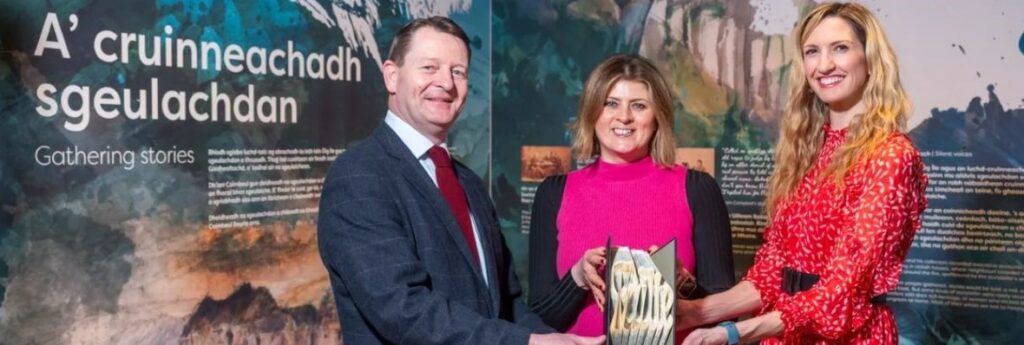A new tourism strategy aimed at delivering authentic and memorable visitor experiences by celebrating Gaelic culture, heritage and language has been launched in Scotland. The new plan highlights an increasing interest in the Gaelic language and culture from both domestic and international visitors.
The Gaelic Tourism Strategy for Scotland 2024-29 was officially launched during the recent Seachdain na Gàidhlig (World Gaelic Week) at the National Library of Scotland in Edinburgh, where the Sgeul exhibition was on display as the venue’s first dual-language exhibition, bringing to life the central role of the storytelling tradition to Gaelic culture.
VisitScotland developed the strategy alongside representatives from the Scottish tourism industry and partners including the Scottish Government, Creative Scotland and Historic Environment Scotland. Priorities include increasing visitor awareness of Gaelic, improving access to Gaelic resources, skills and training for the tourism industry, and supporting businesses to recognize opportunities and incorporate Gaelic within their offering.
Gaelic is part of daily life in Scotland and has been for centuries. Many Scottish place names have origins in the Gaelic language, from Dundee (Dùn Dè) to Dumfries (Dùn Phris) and some of the country’s best-known national icons, such as Highland dress, ceilidhs and whisky have their origins in Gaelic culture.
Gaelic alsp continues to play an important role in Scotland’s vibrant music and cultural scenes and featured in the hugely popular TV series ‘Outlander.’
An increased interest and value associated with Gaelic language and culture was highlighted in the Scottish Social Attitudes Survey 2021 where 79% of people thought that Gaelic is either important or very important to Scotland’s cultural heritage.
Additionally, Gaelic culture and language are of growing interest to visitors. From 2018 to 2021 there was a 72% increase in the number of VisitScotland.com users visiting Gaelic elated content. To date, VisitScotland’s Scottish Gaelic Explained video has been viewed more than 710k times on YouTube.
The new plan highlights some of the innovative ways that businesses and organizations in the tourism, culture and heritage sectors are using Gaelic to connect with visitors and local communities.
For example, in the Highlands, the Cairngorms National Park Authority has created a local Shinty Trail (Slighe na Camanachd) that allows visitors to explore the history of the sport and its importance to the Gaelic language.
Glasgow hosts the largest Gaelic community outside the Western Isles and the creation of the Glaschu.net website showcases the Gaelic heritage of the different neighbourhoods in Glasgow as well as different aspects of Gaelic culture in the city and how to experience them.
In February, the third annual Seachdain na Gàidhlig (World Gaelic Week), featured a week-long program of more than 100 events and activities.
“Gaelic is a central part of Scotland’s heritage, and we are determined to ensure it is integral to our future… We know there is a growing appetite among domestic and international visitors to discover more about the role Gaelic plays in our national story and this strategy will help our tourism sector to deliver on that.”
Amina Shah, National Librarian and Chief Executive, National Library of Scotland, added: “Our first dual-language exhibition, Sgeul, has proved hugely popular… International visitors are captivated by Gaelic culture and its rich storytelling tradition.”

